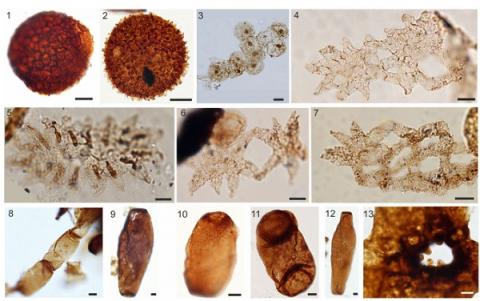Silvia N. Césari, Carlos O. Limarino, Patricia L. Ciccioli & Corey Wall
2 022
Palynology Volume 47, 2023 - Issue 1
The upper Palaeozoic basins of central-western Argentina include continuous fossiliferous successions spanning the Carboniferous-Permian interval. The palynostratigraphic biozones comprise Late Mississippian, Pennsylvanian and Cisuralian assemblages. Recently, new palynofloras of the La Veteada Formation were referred to the Lopingian (late Permian). However, they are characterized by spores and tetrads of Lundbladispora spp. and Densoisporites spp., pollen grains of Lunatisporites pellucidus, L. noviaulensis and Protohaploxypinus samoilovichii, and the alga Syndesmorion stellatum, that distinguish the post-Permian recovery floras worldwide. A new uranium-lead chemical abrasion-isotope dilution-thermal ionization mass spectrometry (U-Pb CA-ID-TIMS) age confirms the Olenekian age of this stratigraphic unit and allows the identification of the first Early Triassic palynofloras in this region of western Gondwana. Comparison and correlation with similar assemblages from the southern and northern hemispheres supports the Early Triassic turnover with an increase of lycopsid cavate spores associated with some diagnostic species of taeniate and non-taeniate bisaccate pollen.
https://doi.org/10.1080/01916122.2022.2097329

